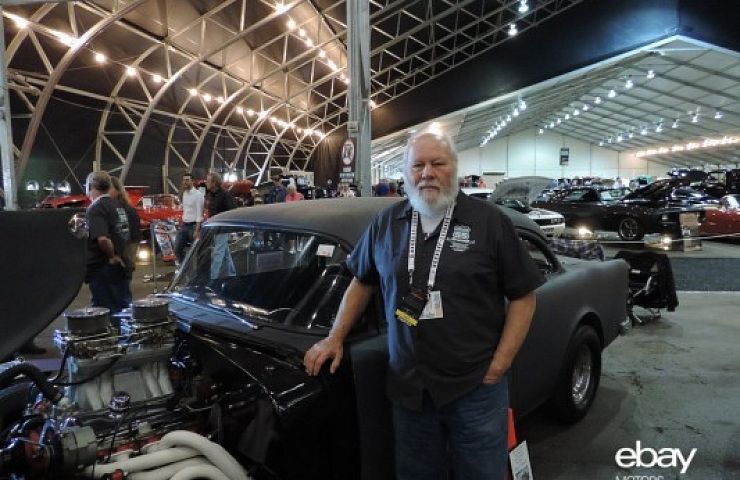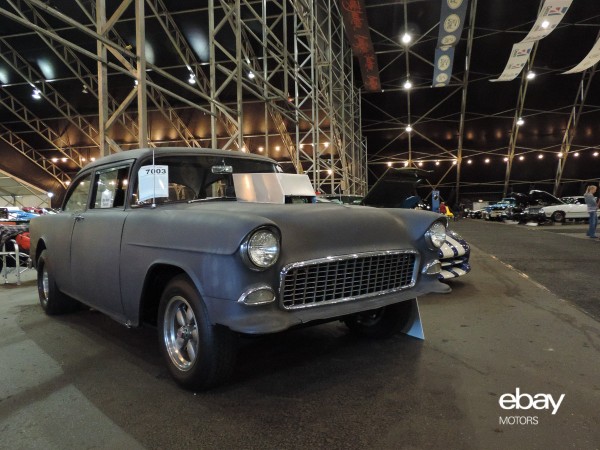Imagine building the iconic 1955 Chevrolets used in the 1971 cult classic “Two-Lane Blacktop” and then walking away from fabricating more movie cars for Hollywood. That’s exactly what Richard Ruth did and here’s why.
Two-Lane Blacktop told the story of three guys and a girl racing across the United States in two cars; a 1970 Pontiac GTO and a 1955 Chevy. You may know the story behind the ‘55. It seems that there were actually three ‘55 Chevys made for Two-Lane Blacktop. One was designed to roll over for a film-ending crash scene but that crash scene was deleted before filming. Harrison Ford later drove a second car built for exterior shots in that other classic, American Graffiti. In fact, the crash car from Two-Lane Blacktop was used for that climatic crash in American Graffiti.
And the third car from Two-Lane Graffiti was used for the interior shots and later sold after the filming was over. It was located in Canada by Walt Bailey and later restored to its movie greatness before recently being sold at the Barrett-Jackson Auction in Scottsdale, Arizona.
All three ‘55 Chevys had been built by Richard Ruth of Competition Engineering. Ruth had been totally immersed in the California car scene and as a youth would even cruise by with his buddies on their bicycles to see the latest rides being customized by the SoCal legends.
Ruth fondly recalls that car customizing king, Dean Jeffries, once placed some white pin striping on his bicycle as a joke while he was working on a car. How Ruth (and others) wishes he had that bike now!
Ruth had worked for another company helping to build headers and then spun off his own company. Ruth knew an employee of Car Craft magazine, Don Green, who was assisting the film producers to locate cars for the movie. Ruth borrowed a friend’s ‘56 Chevy and drove them to the Burbank Bob’s Big Boy to check out the local car scene.
The producers loved the look of the gasser and had Ruth bid on making the three cars. Ruth won the bid and hinted that he actually made the most money on the crash car, since it would need the least work. Ruth had seven months to fabricate the cars. Ruth figured this was his chance to build the drag car he always longed for. He used a bent tube axle for the front end and rear ladder bars, Ruth felt that typical gasser with a straight axle was too high up and hard to handle. Both had Munice M-22 “rock crushers” four speeds and Oldsmobile 4.88 rear ends. The interior car had a 454 Chevy crate engine, while the exterior car had a crate 427 engine installed.
As first delivered, the cars had black fiberglass hood, trunk and door panels. The body panels were painted blue. As Ruth explains, the look back then was to flaunt your racing style so you weren’t trying to be a “sleeper”, but showed off your machine and the work you did; like lightening your car with fiberglass parts. Ruth also replaced the heavier glass with fiberglass pieces that screwed in.
Ruth said the producers didn’t like the two tone look but wanted the cars all black primer because “drag racers were dirty”, which angered Ruth to no end. Ruth quickly and reluctantly changed out the color on the ‘55s and was reminded of advice from his friend Dean Jeffries, “you have to make junk” for Hollywood. The producers did like the roll cages in the car as they held the camera mounts. With the fiberglass panels easy to screw on and off, the producers utilized that fact to allow for some shots from the back end of the interior.
One trick that Ruth did was replacing the glass in the doors with Plexiglas, but with small sliding horizontal windows. That way Ruth could easily reach through the opening and get the timing slips after a run on the local drag strip.
Ruth agreed to follow the cars out to Needles for some of the filming and had a small part as a mechanic. He insisted in wearing a t-shirt from his buddy’s shop – Glendale Speed Center. But more movies were not in Ruth’s future. He was so turned off by how little the film producers knew about street racing that he never tried to work on other films. Instead he went back to his roots making funny cars and drag cars for others.
Ruth later moved to Merced, California and renamed his company Ruth Industries. When the cult status of the movie intensified, people tracked him down and asked for assistance in making clones of the ‘55. Ruth had kept all the original templates and drawings from the making of the movie cars and now offers to make the pieces for car builders. It is interesting to learn that Ruth turns out these parts using the same equipment and tools that he had back in 1970!
- Richard Ruth/Builder
- Richard Ruth and Walt Bailey
- Walt Bailey
 |
From overviews of trends in the automotive industry to penetrating looks at car shows, auctions and classic car trends we offer readers a unique perspective with a mix of irreverence and off the wall humor. Check out other articles at Route66PubCo.com. |






















